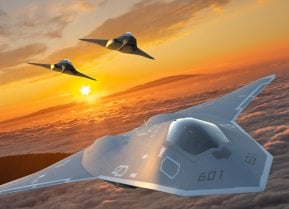The U.S. Navy Is Desperate It Is 'Extending' 3 Ticonderoga-Class Cruisers
The U.S. Navy extended the service life of three Ticonderoga-class cruisers—USS Gettysburg, USS Chosin, and USS Cape St. George—thanks to modernization upgrades and the successful implementation of the Transferrable Reload At-sea Mechanism (TRAM), allowing at-sea missile reloads.
What You Need to Know: The U.S. Navy extended the service life of three Ticonderoga-class cruisers—USS Gettysburg, USS Chosin, and USS Cape St. George—thanks to modernization upgrades and the successful implementation of the Transferrable Reload At-sea Mechanism (TRAM), allowing at-sea missile reloads.
![]()
-Initially slated for retirement by FY27, the cruisers will now remain active until the late 2020s, addressing the Navy's need for more operational warships. The modernization aligns with the Navy’s Warfighting Excellence initiative, ensuring these cruisers continue contributing to mission readiness.
-TRAM technology will also support future frigates, enhancing fleet flexibility and reducing dependency on port visits.
U.S. Navy is Desperate – Aging Ticonderoga-Class to Remain in Service
Days after the United States Navy announced that a dozen Arleigh Burke-class guided-missile destroyers would see their service lives extended, it was announced that three aging Ticonderoga-class cruisers (CG 47) will also continue to sail the world's oceans longer than expected.
On Monday, the Department of the Navy announced service life extensions for USS Gettysburg (CG-64), USS Chosin (CG-65), and USS Cape St. George (CG-71).
"This decision adds 10 years of cumulative ship service life from fiscal year 2026 to 2029," the U.S. Navy stated.
![]()
The three warships were chosen as all had "received extensive hull, mechanical and engineering, as well as combat system upgrades as part of an extended modernization program," with the work for CG-64 completed in fiscal year 2023 (FY23), while the modernization of CG-65 was finished in fiscal year 2024 (FY24), which ended on September 30. CG-72 is now on track to have the modernization completed in the current fiscal year (FY25).
"As a former cruiser Sailor, I know the incredible value these highly-capable warships bring to the Fleet and I am proud of their many decades of service," said Secretary of the Navy Carlos Del Toro.
The Ticonderoga class modernization began in the 2010s, according to a report from USNI News. It was undertaken by the sea service to keep 11 of its 22 guided-missile cruisers in operation until the 2030s. As part of the effort, seven cruisers were taken out of active service, overhauled, and then returned to service as older vessels were subsequently retired.
FY24 saw four Ticonderoga-class guided missile cruisers decommissioned – including USS Vicksburg (CG-69) in June, and USS Cowpens (CG-63) in August. Both vessels had also undergone the modernization program. USS Leyte Gulf (CG-55) and USS Antietam (CG-54) were decommissioned in September, at the end of FY24.
The U.S. Navy had sought to retire all of its cruisers from the Ticonderoga class by fiscal year 2027 (FY27) but was forced to reverse course.
![]()
"After learning hard lessons from the cruiser modernization program, we are only extending ships that have completed modernization and have the material readiness needed to continue advancing our Navy's mission," Del Toro added.
Successful TRAM Helped Extend the Cruiser Program
There is no denying that the U.S. Navy has too few warships, but a factor in the extension of the three cruisers was the successful test of the Transferrable Reload At-sea Mechanism (TRAM) on USS Chosin last month. It was employed "to load an empty missile canister into the ship's MK 41" VLS while the vessel was in the open ocean, the service previously announced.
Reloading the VLS isn't exactly high-tech, and instead employs a time-tested cable and pulley system, but the point remains that it allows sailors at sea to do what normally required a trip back to port. Moreover, it is a time-consuming process. TRAM – which will be used with the future Constellation-class frigates – will enable guided-missile cruisers and destroyers to reload the VLS at sea.
"This transformational logistics capability enables U.S. Navy ships to rearm without needing to pull into port," the Navy added. "The service life extensions align with Secretary Del Toro's priority of Warfighting Excellence and Chief of Naval Operations Adm. Lisa Franchetti's Navigation Plan, which prioritizes putting more ready players on the field."
Author Experience and Expertise: Peter Suciu
Peter Suciu is a Michigan-based writer. He has contributed to more than four dozen magazines, newspapers, and websites with over 3,200 published pieces over a twenty-year career in journalism. He regularly writes about military hardware, firearms history, cybersecurity, politics, and international affairs. Peter is also a Contributing Writer for Forbes and Clearance Jobs. You can follow him on Twitter: @PeterSuciu. You can email the author: Editor@nationalinterest.org.
Image Credit: Creative Commons and/or Shutterstock.

